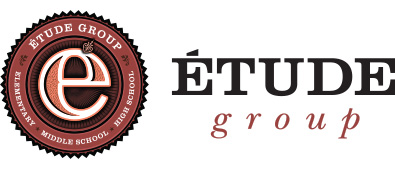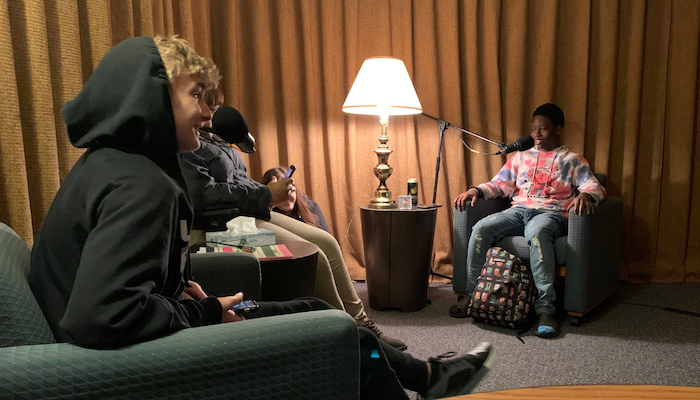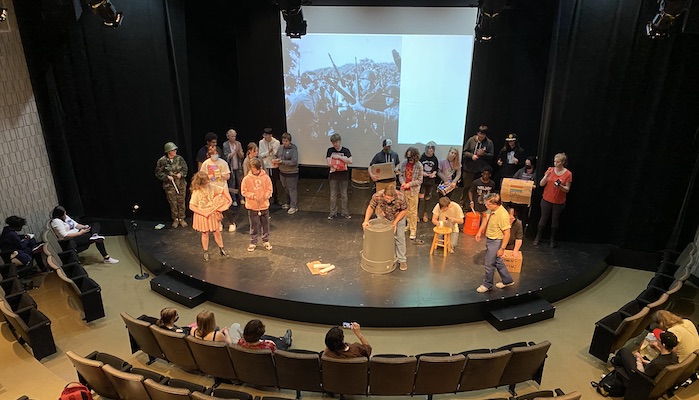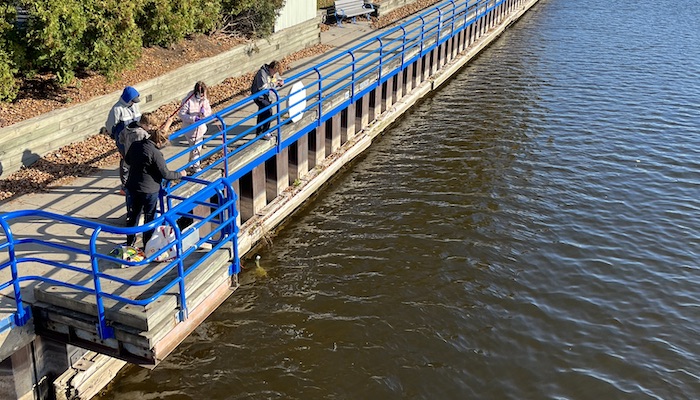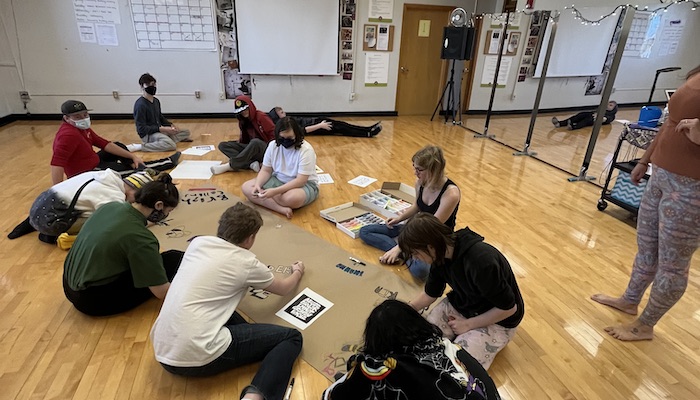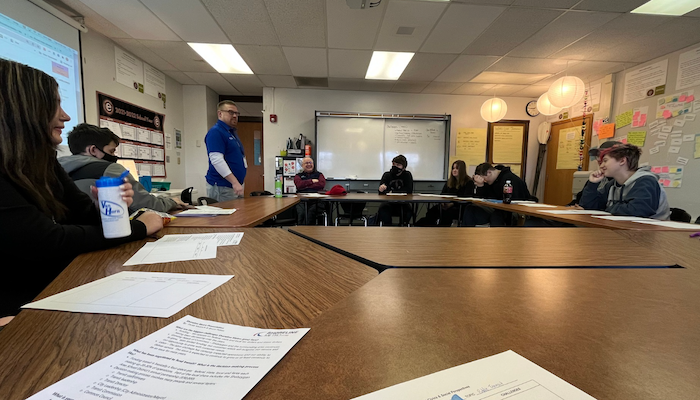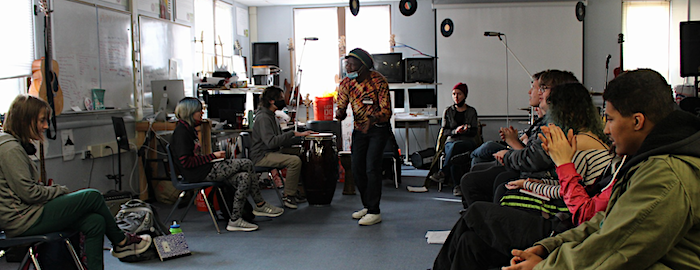
When high school students are studying U.S. history, what are they really learning? History and civics, of course, but what about the folk music that prompted and described major turning points in our national development?
At ÉtudeHigh School, those things fit naturally together as part of the school’s use of interdisciplinary courses.
Interdisciplinary courses combine different content areas for units and lessons where they’re a natural fit, giving students a broader understanding of the subject. Not every subject is taught this way, of course, but the courses where it is offered broaden students’ opportunities and pique their interest in new ways.
Étude started small during the 2020-21 school year with one interdisciplinary course: A Small Place by Jamaica Kincaid, part of the University of Wisconsin’s Great World Texts programs, combining English and movement. Students read the book about imperialism and tourism in Antigua, learned about native dances and put it all together for their final project.
Great World Texts is currently the basis for combined English and social studies as students read The Autobiography of an Ex-Colored Man by James Weldon Johnson. Other examples include an applied physics class that combines science and engineering and a course on game design that combines drama and engineering as students study the elements of gaming and collaborate to design a game of their own.
Most course areas retain the traditional single-topic structure: humanities classes such as literature and social studies and science classes like biology and anatomy/physiology. Étude High School’s curriculum covers five course areas: Humanities, Science and Technology, Mathematical Reasoning, IDEA (creative thinking) and Habits of Professionalism.
Interdisciplinary courses break down the walls between subjects so students can look at a topic through different lenses, learning more and discovering something about their own interests and abilities in the process.
Addie Degenhardt, an English-Language Arts teacher, has been teaching the Great World Texts program for several years and has seen firsthand how the interdisciplinary approach reaches students.
“If we studied it simply from an English perspective, the value would be solely on the literature,” she said. “The social studies component, bringing in elements of social studies that aren’t necessarily addressed in the English component – political, social, cultural – allows them to have an immersive experience in the topic versus just through that one lens. They can create something beyond an essay—a project that conveys their well-rounded understanding of the topic.”
Theater and film teacher Mike Hanlon believes the more students can delve into a topic, the more they will learn and the farther they will go. And eliminating the barriers between subjects is one way to make that happen.
“It breaks down the walls between subjects,” said Hanlon, who has seen interdisciplinary units at all levels throughout Étude Group over the years. “We felt like it was a really successful way to make sure students are engaged and make sure they’re making something, not just taking a test or writing an essay at the end.”
Hanlon is involved in an interdisciplinary unit right now with biology students, who are studying genetics and body systems. The interdisciplinary part comes when the students take what they’re learning on that topic and turn it into a radio drama. It might sound a little far-fetched, but students who perform a live-action metaphor for body systems will remember what they learned in class.
Gauging by what students subsequently show in Presentations of Learning and other opportunities to highlight the work they’re proudest of, the interdisciplinary model is working, Degenhardt said.
“(Students) always presented stuff from the humanities department – at that time all classes were English and social studies combined,” she said. “The thinking is so much more elevated because of the fact that they’re learning from multiple avenues and incorporating multiple perspectives into their thinking and creations.”
Because the concept is still in its infancy at Étude High School, administrators are keeping a close eye on it. As long as student performance and test scores stay high, along with student interest, it will continue.
